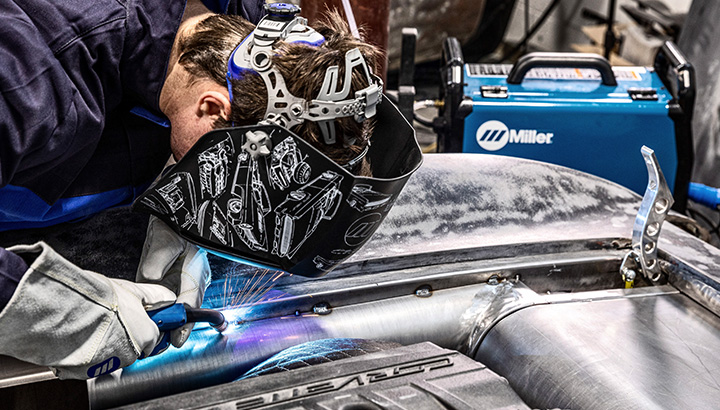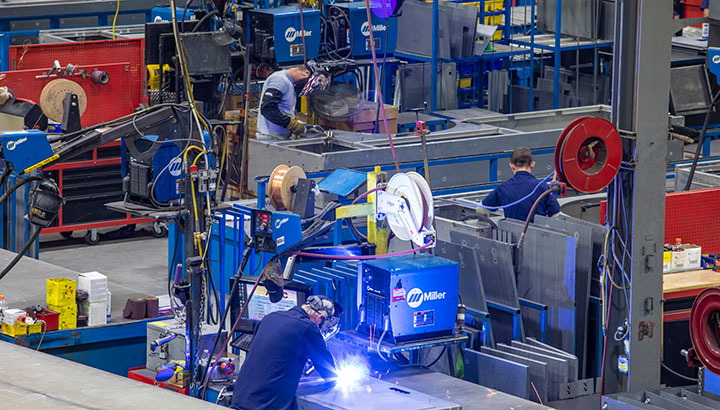Top welding defects Montana Mobile Welding and Repair Belgrade Welding helps eliminate
Wiki Article
Everything about Welding: Key Insights Into Techniques and Ideal Practices for Success
Welding includes a variety of methods, each fit for particular materials and applications. Recognizing these techniques, such as GMAW, SMAW, and TIG, is vital for achieving optimal results. Additionally, the ideal devices and safety practices can not be overlooked. As prep work and troubleshooting play critical functions in the welding procedure, grasping these aspects can significantly improve the top quality of the final product. What are the essential aspects that assure a successful weld?Comprehending Various Welding Techniques
Welding strategies include a variety of techniques, each fit to details applications and products. Amongst the most typical strategies are Gas Metal Arc Welding (GMAW), Protected Metal Arc Welding (SMAW), and Tungsten Inert Gas Welding (TIG) GMAW, also referred to as MIG welding, is popular for its rate and convenience, making it suitable for slim materials. SMAW, or stick welding, is favored for its simpleness and effectiveness in outdoor environments, especially with thicker metals. TIG welding supplies precision and control, making it appropriate for intricate job and non-ferrous steels (Fabrication). Each method has its special advantages and factors to consider, enabling welders to pick the most effective method based on the project's demands, product type, and wanted end results. Recognizing these methods is essential for successful weldingCrucial Welding Tools and Devices
While various welding techniques call for details skills, the appropriate equipment and tools are similarly essential for attaining top quality outcomes. Crucial welding equipment consists of welding makers, which differ relying on the strategy-- such as MIG, TIG, or stick welding. Safety gear, consisting of headgears, handwear covers, and aprons, assurances security and convenience during the process. In addition, clamps and components assist protect products in position, making sure precision in welds. Consumables like welding rods, wire, and securing gas are additionally important components that affect the top quality of the weld. Tools such as cutters and mills facilitate surface preparation and post-weld finishing, adding to a professional end result. Purchasing high-grade tools ultimately boosts the effectiveness and efficiency of welding jobs.Safety Practices in Welding
Correct security methods are important in the welding industry to protect employees from prospective hazards. Welders need to use suitable personal protective tools (PPE), including helmets with correct shading, gloves, and flame-resistant clothes. Ample ventilation is crucial to lower direct exposure to hazardous fumes and gases generated during the welding process. In addition, workers need to be educated in the correct handling of welding tools to protect against crashes. Fire precaution, such as maintaining combustible products away from the welding area and having fire extinguishers readily offered, are necessary. Normal assessments of devices and offices can aid identify possible threats prior to they lead to crashes. By sticking to these security methods, welders can develop a much safer working atmosphere and reduce threats linked with their profession.Readying Materials for Welding
Preparing products for welding is an essential step that significantly affects the quality and integrity of the end product (Welding). Correct preparation entails cleaning the surfaces to remove contaminants such as dust, oil, and rust, which can jeopardize the weld. Methods such as grinding, sanding, or making use of solvents are generally utilized to attain a clean surface. In addition, making sure that the products fit with each other well is important; gaps can result in weak welds. It's likewise vital to think about the placement and positioning of the parts, as this will influence the simplicity of welding and the last result. Selecting the ideal filler material and making certain compatibility with the base metals is vital for attaining solid, long lasting welds.Tips for Getting High-Quality Welds
Accomplishing high-quality welds calls for attention to detail and adherence to ideal techniques throughout the welding process. Proper joint preparation is essential, guaranteeing surfaces are free and tidy from impurities. Selecting the suitable filler product and welding technique based upon the base metals is vital for optimal bonding. Keeping regular traveling speed and angle while welding can stop defects and advertise uniformity. Furthermore, regulating heat input is important; excessive warmth can cause warping and weakened joints. If necessary, frequently evaluating the welds throughout the procedure enables for instant adjustments. Using appropriate post-weld treatments, such as cleaning and tension alleviation, can improve the longevity and integrity of the weld, eventually making sure an effective end result.Troubleshooting Common Welding Issues
Welding typically provides obstacles that can affect the quality and stability of the last product. Typical issues such as porosity, inconsistent weld beads, and overheating can arise, each calling for certain fixing techniques. Recognizing these issues is essential for welders to improve their abilities and accomplish perfect outcomes.Porosity Issues Explained
Although porosity can usually be overlooked, it continues to be a crucial issue in welding that can jeopardize the integrity of a finished product. Porosity describes the presence of tiny gas pockets within the weld bead, which can lead and deteriorate the joint to early failing. This issue commonly emerges from contaminants, wetness, or improper protecting gas insurance coverage throughout the welding process. To minimize porosity, welders ought to confirm that the base materials are completely dry and tidy, use appropriate protecting gases, and maintain regular welding criteria. Frequently inspecting the tools and atmosphere can also assist recognize potential issues prior to they manifest in the weld. Attending to porosity properly is crucial for attaining strong, sturdy welds that fulfill high quality requirements.
Irregular Weld Beads
Inconsistent weld beads can significantly influence the high quality and stamina welding skills of a completed item. Numerous factors contribute to this issue, including incorrect travel speed, wrong amperage settings, and inconsistent electrode angles. When the welder moves as well quickly, a grain might show up narrow and do not have infiltration, while relocating also slowly can create extreme accumulation. Additionally, utilizing the wrong amperage can lead to either damaging or extreme spatter, both of which compromise weld stability. The welder's technique, such as inconsistent torch movement, can also cause unequal grain appearance. To reduce these issues, welders need to concentrate on preserving stable, controlled movements and making certain appropriate equipment settings to achieve harmony in their welds. Uniformity is essential to attaining dependable and solid welds.Overheating and Warping Issues
Extreme heat throughout the welding procedure can result in significant overheating and buckling problems, influencing the architectural integrity of the work surface. These issues usually materialize as distortion, which can endanger placement and fit-up, making more assembly testing. Factors contributing to overheating consist of the selection of welding specifications, such as voltage and travel rate, in addition to the kind of product being welded. To alleviate these issues, welders need to keep regular travel speed and suitable warmth input while monitoring the workpiece temperature level. In addition, pre-heating or post-weld warm treatment can help alleviate stress and anxieties created by rapid cooling - Montana Mobile Welding and Repair Belgrade Fabrication. Normal evaluation and adherence to best methods are essential in protecting against getting too hot and making certain the long life and reliability of bonded frameworksRegularly Asked Concerns
What Are the Career Opportunities in the Welding Sector?
The welding sector supplies varied occupation chances, consisting of positions as welders, engineers, instructors, and examiners. Professionals can operate in manufacturing, construction, aerospace, and automobile industries, gaining from solid demand and competitive wages in numerous functions.Exactly How Can I Enhance My Welding Rate Without Compromising High Quality?
To boost welding rate without giving up high quality, one should practice effective methods, keep equipment, optimize setups, and boost hand-eye control. Regular training and looking for feedback can additionally significantly add to achieving much faster, premium welds.What Certifications Are Available for Welders?
Many qualifications exist for welders, including those from the American Welding Culture (AWS), the National Facility for Building Education And Learning and Research (NCCER), and various industry-specific organizations. These credentials improve employability and show ability effectiveness.How Does Welding Affect the Features of Metals?
Welding influences the residential or commercial properties of steels by modifying their microstructure, which can result in adjustments in solidity, stamina, and ductility. Heat input and air conditioning prices throughout the procedure considerably influence these material attributes.Can I Weld Dissimilar Metals Together?

Report this wiki page